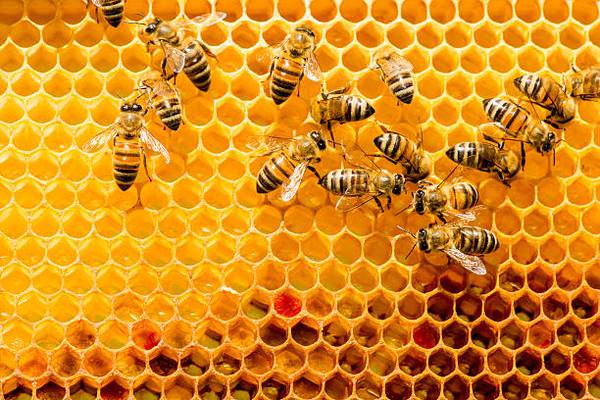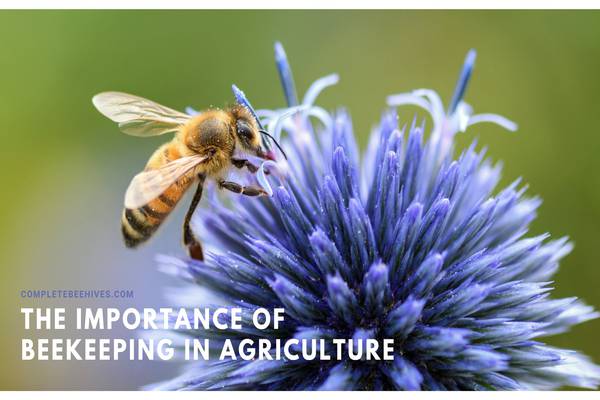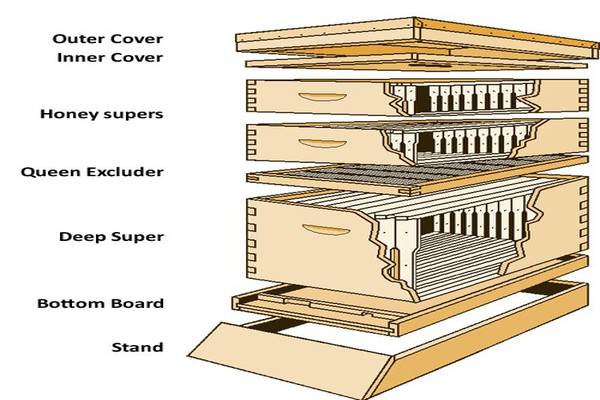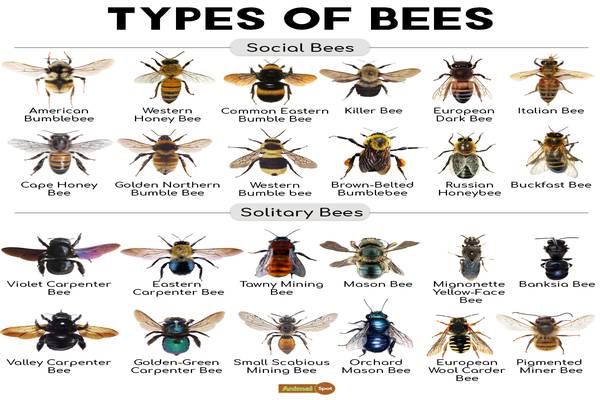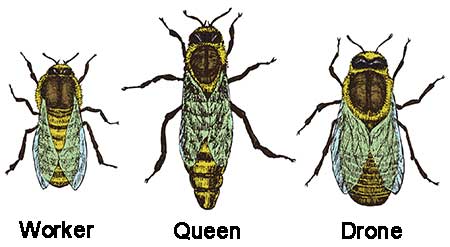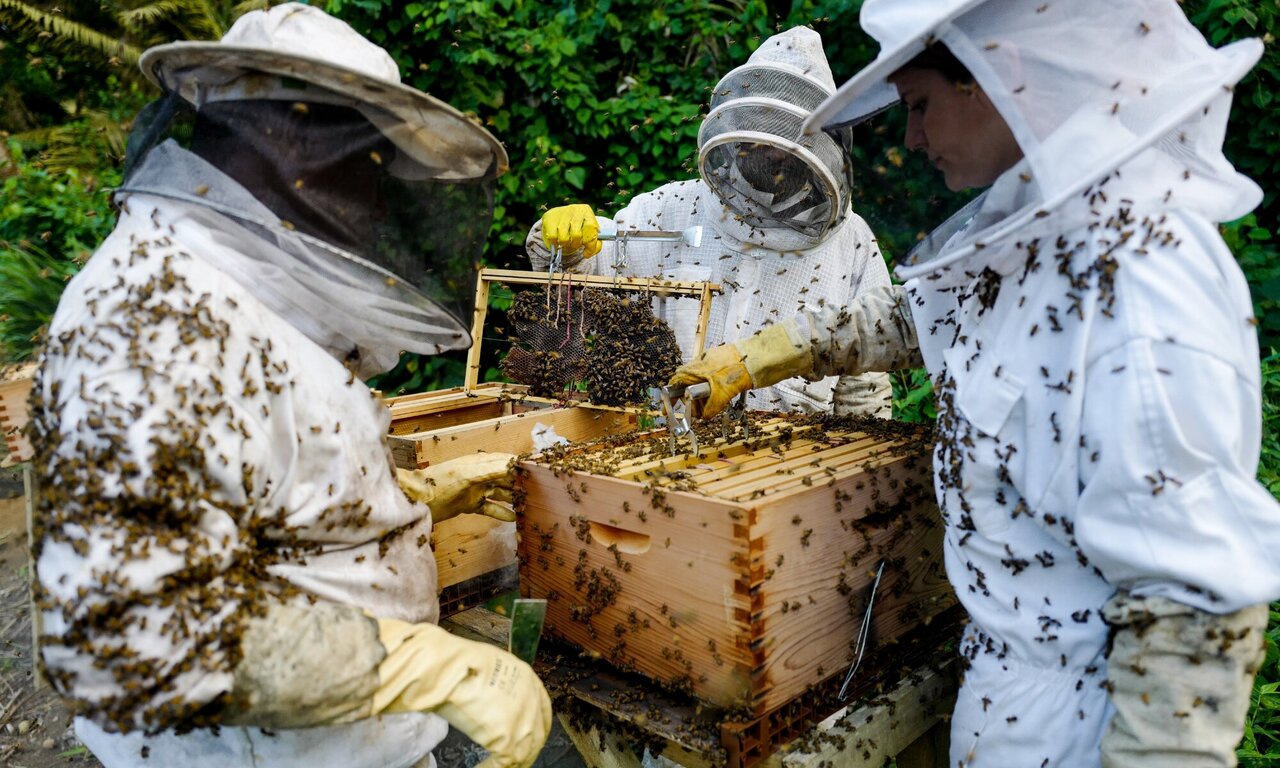Introduction To Beekeeping
Drafted by: vijaychourey26@gmail.com
Beekeeping, also known as apiculture, is the practice of raising and maintaining colonies of honeybees for various purposes, primarily the harvesting of honey, beeswax, and other bee-related products. This fascinating endeavor not only provides valuable resources but also plays a crucial role in pollination, benefiting the environment and agriculture. In this article, we will delve into the world of beekeeping, exploring its history, benefits, techniques, and challenges.
A Brief History Of Beekeeping
Beekeeping dates back to ancient civilizations, where humans first recognized the value of honey and beeswax. Ancient Egyptians, Greeks, and Romans all engaged in beekeeping, using clay hives and woven baskets to house bees. Over time, beekeeping techniques evolved, leading to the development of modern hives and methods that optimize honey production.
The Importance Of Beekeeping
Pollination and Agriculture
Beekeeping plays a crucial role in pollination, enhancing the growth of crops and wild plants alike. Honeybees are excellent pollinators, aiding in the reproduction of many fruits, vegetables, and flowering plants. This essential service boosts agricultural productivity and maintains biodiversity.
Honey and Other Bee Products
The primary reason many individuals venture into beekeeping is the harvest of honey. Honey is not only a natural sweetener but also boasts numerous health benefits. Additionally, beekeepers can collect beeswax, royal jelly, propolis, and pollen, all of which have various applications in food, medicine, and cosmetics.
Starting With Beekeeping: Basics And Equipment
Choosing the Right Location
Selecting an appropriate location for your beehives is crucial. Ideally, the area should have access to a variety of flowering plants, a water source, and protection from harsh weather conditions.
Essential Beekeeping Equipment
Hive Components: The beehive consists of several components, including the bottom board, hive bodies, frames, and covers.
Protective Gear: Beekeepers require suits, gloves, veils, and smoker equipment to ensure their safety while working with bees.
Tools: Hive tools, bee brushes, and extractors are essential for managing hives and harvesting honey.
Types Of Bees In Beekeeping
Honeybees
Honeybees are the most commonly managed bees in beekeeping. They live in large colonies and are known for their complex social structure. Honeybees are valuable pollinators and are responsible for the production of honey and beeswax.
Bumblebees
Bumblebees are excellent pollinators, often used in greenhouse pollination. They are larger than honeybees and have distinctive black and yellow markings. Bumblebee colonies are smaller than those of honeybees, making them easier to manage.
Solitary Bees
Solitary bees, as the name suggests, live independently rather than in colonies. They are important pollinators for various plants. Unlike honeybees and bumblebees, solitary bees do not produce honey in large quantities.
Queen Bee Importance And Pollination For Beekeeping
The Heartbeat of the Hive
In the intricate world of a beehive, the queen bee holds a position of utmost importance. She's not just a ruler but the heart and soul of the colony. Let's unravel the queen bee's remarkable journey, starting with her anatomy and life cycle.
The Queen Bee's Anatomy and Life Cycle
The queen bee is the sole fertile female in a honeybee colony. Her primary role is to lay eggs, ensuring the continuation of the colony. The eggs she lays give rise to new workers, drones (males), and potential future queens. Without a fertile queen, the colony cannot produce new members, and it will eventually perish.
The Royal Duties: Egg Laying and Colony Harmony
The queen bee's primary role is to lay eggs, and she's astonishingly proficient at it. In peak season, she can lay up to 2,000 eggs a day. Queen bees are crucial for maintaining genetic diversity within the colony and the broader honeybee population. They mate with multiple drones from different colonies, leading to a mix of genetic material in the offspring. This genetic diversity enhances the colony's resilience against diseases and environmental changes.
The Pheromone Regulation and Queen Bee Replacement
As time passes, the queen bee's egg-laying efficiency decreases. This prompts the colony to prepare for her replacement through a process known as supersedure, ensuring a healthy and productive hive. Queen bees release pheromones that communicate important information to the rest of the colony. These chemical signals help coordinate the behavior and development of worker bees. For example, the queen's pheromones inhibit the development of new queen bees and maintain a cohesive and efficient workforce.
Pollination
Pollination is a crucial ecological service that bees provide. Many plants, including a significant portion of crops, rely on pollinators like honeybees for reproduction. As bees visit flowers to collect nectar and pollen, they inadvertently transfer pollen from one flower to another, facilitating fertilization and fruit or seed production. This process ensures the diversity and abundance of many plant species.
Colony Health and Efficiency
The presence of a healthy and productive queen bee positively impacts the overall health and efficiency of the colony. A well-mated and vigorous queen can lay thousands of eggs each day, ensuring a constant supply of worker bees. These workers are responsible for foraging, caring for the brood, and maintaining the hive.
Beekeeping Techniques And Maintenance
Hive Selection and Placement
Selecting the right hive and its location is crucial for successful beekeeping. Hives should be placed in areas with access to food sources and protected from harsh weather conditions.
Swarm Management
Swarming is a natural behavior of honeybees, but beekeepers must manage it to prevent the loss of bees. Techniques like providing ample space in the hive and dividing colonies help control swarming.
Feeding and Nutrition
Proper nutrition is essential for bee colonies to thrive. Beekeepers often provide supplemental feed when natural nectar sources are scarce, especially during colder months.
Hive Inspection and Pest Management
Regular hive inspections help beekeepers monitor the health of the colony and identify potential issues. Regular hive inspections are vital to monitor the health and behavior of your bee colony. During inspections, beekeepers check for signs of disease, the presence of a queen, and sufficient honey stores. Pest management is also crucial to protect the bees from diseases and parasites.
Harvesting Honey and Products
Harvesting honey and other products, such as beeswax and propolis, is a rewarding aspect of beekeeping.
Honey Extraction
Harvesting honey requires careful planning. Beekeepers use specialized equipment such as honey extractors to collect honey from frames without harming the bees. After extraction, the honey is filtered and stored for consumption.
Challenges And Conservation Efforts
Colony Collapse Disorder (CCD)
CCD is a phenomenon where worker bees abruptly disappear from the hive, leading to colony collapse. This has raised concerns about bee population decline and its impact on pollination and agriculture.
Pesticide Use and Habitat Loss
The use of pesticides and the loss of natural habitats threaten bee populations. Beekeepers and environmental organizations are working together to raise awareness and promote sustainable practices.
The Future Of Beekeeping
Technological Advancements
Technology is playing an increasing role in beekeeping. Hive monitoring sensors, AI-driven analysis of bee behavior, and automated hive management systems are shaping the future of apiculture.
Sustainable Practices
As environmental concerns grow, sustainable beekeeping practices are gaining importance. Using organic methods, reducing pesticide use, and preserving natural habitats contribute to the well-being of bees and ecosystems.
Urban Beekeeping
Urban beekeeping is on the rise, with enthusiasts keeping hives on rooftops and in community gardens. This trend promotes pollination in urban areas and raises awareness about the importance of bees.
